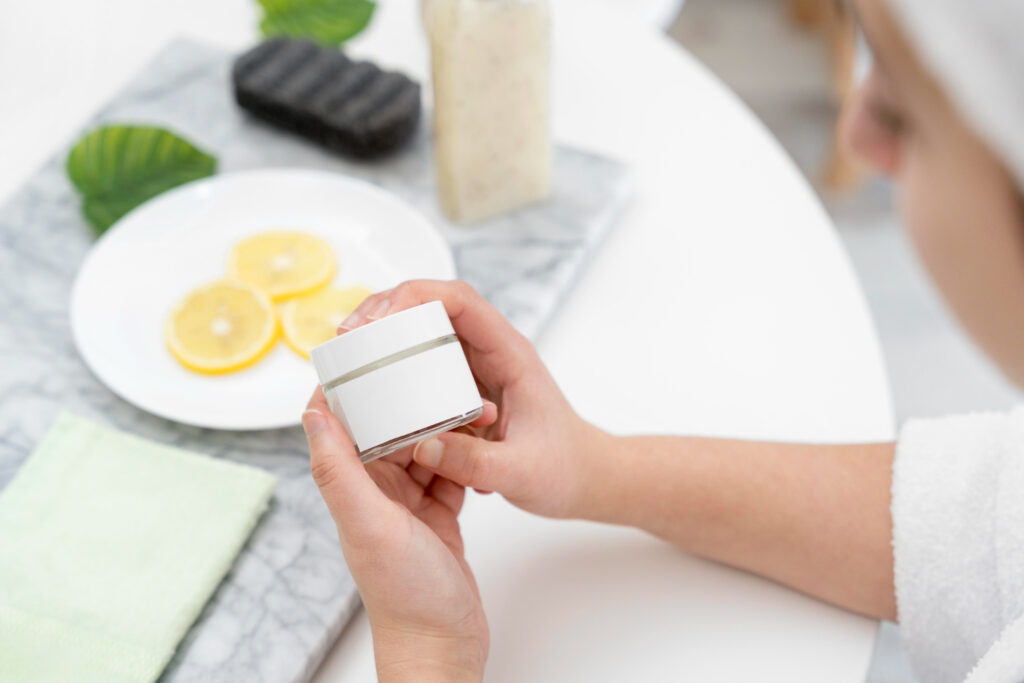Top Ingredients to Look for in a Moisturizing Body Lotion

Over the years, skincare has undergone enormous change. The moisturiser aisle might appear to be a minefield if you have dry, flaky skin. If individuals merely know which chemicals are good for the skin and which are not, the newest approaches have demonstrated how they may become informed and empowered about their goods.
A good moisturiser should have occlusive ingredients (which act as a protective barrier), emollients (which seal in moisture), and humectants (which attract water into the skin’s top layer). What about the ingredients that should be in our beauty products? We frequently hear about harmful substances that should never ever be there. Check out this list of ingredients to look for in body lotions if you’re seeking to reduce dryness and flakiness and aren’t sure how to buy one.
Polyols, glycols, and glycerin
These three humectant-family substances allow the skin to absorb and bind more moisture. It is frequently used in hydrating soaps and cleansers that are designed to gently wash skin without robbing it of moisture due to its powerful ability to draw in and retain water. Propylene glycol and butylene glycol are two of the most often utilised forms of these humectants; they may be found in many different varieties on ingredient lists.
Hyaluronic acid
Hyaluronic acid is an excellent component in creams even though many people use it as a serum. It is a humectant, which attracts water. It maintains skin elasticity and is one of the chemicals your skin naturally produces to retain water. Applying more cream containing this acid can keep your skin hydrated because it loses effectiveness when exposed to UV rays.
Essential fatty acids
Essential fatty acids, often known as good fats, provide the energy needed by cells to carry out biological functions like moisturization that maintain skin that is glowing and healthy. The nutrients must be taken through a person’s food or via skin lotions because the body cannot produce the necessary fatty acids on its own. Olive oil, avocado, almond oil, and shea butter are all important fatty acids that will help seal in moisture.
Ceramides
Ceramides, whether they are natural or synthetic, will help in preserving and reestablishing the skin barrier function, keeping moisture in. Ceramides are lipid molecules located in the membrane of skin cells that are attributed with aiding in the prevention of moisture loss.
Shea butter
Shea butter is the best moisturiser for the skin. It is a moisture-holding emollient. Your skin is repaired and the cracks in it are filled. Inflammation is also soothed by it. You can omit this, though, if you have oily or severe acne. It works best when added to body lotions.
Sodium PCA (sodium pyroglutamic acid)
A useful humectant used in personal care products is sodium PCA. That simply means that it has a large capacity for water absorption, which helps in retaining moisture in your skin cells and preventing dry skin. Additionally, sodium PCA has anti-aging advantages and has anti-inflammatory properties. Even cooler, it draws moisture from the atmosphere to your skin, causing it to hydrate itself again.
Cocoa butter
Due to its high fatty acid content, cocoa butter is an excellent choice as the main component of skin creams and lotions. Skin hydration is aided by fatty acids. The fat in cocoa butter forms a barrier that keeps moisture in and stops the skin from drying out.
Aloe vera
Humectants, which help the skin retain moisture, are present in aloe vera. When used as a moisturiser, it can promote the synthesis of collagen and elastin fibres, improving the suppleness of your skin. This could lead to fewer creases and fine lines.
Mango butter
Itching and irritation brought on by dry skin can be stopped with mango butter. Triglycerides, a kind of glycerin, may be found in abundance in it. These fatty acids serve as emollients, softening the skin and preventing dryness and itchiness.
Isopropyl myristate
Emollient isopropyl myristate works to boost the skin’s natural defences against moisture loss. This is an excellent component for those with dry or flaky skin since it acts as an emollient and helps soften and smooth dry skin.
Cetearyl glucoside
Cetearyl glucoside, a mixture of glucose and cetearyl alcohol, is used largely as an emulsifier in cosmetic formulations. It can be produced synthetically or organically. In addition to its emulsifying properties, cetearyl glucoside is a natural self-emulsifying cream base that has great skin compatibility, even with sensitive skin.
Use Science Of Skin’s moisturising body lotion for men and women to get naturally attractive and glowing skin. This is a unique, exclusive product created specifically for very dry skin. Even in the roughest weather, it deeply nourishes and intensively moisturises your skin thanks to its rich composition of Pure Natural Oils and 100% Natural Moisturisers. It repairs dry and damaged skin by penetrating ten layers deep into the skin to replenish lost moisture. With a light, non-greasy texture and rapid absorption, this body lotion conditions and softens your skin without leaving any dirt behind. Your sense of renewal and refreshment will be enhanced by its pleasant scent.
Mango and Aloe Vera are well known for their nourishing and rejuvenating effects on the skin. It restores lost moisture to the skin, calms it internally, and helps in the healing of dry, irritated skin. The Science Of Skin moisturising body lotions are made from natural ingredients and are ideal for dry skin; appropriate for both men and women.
